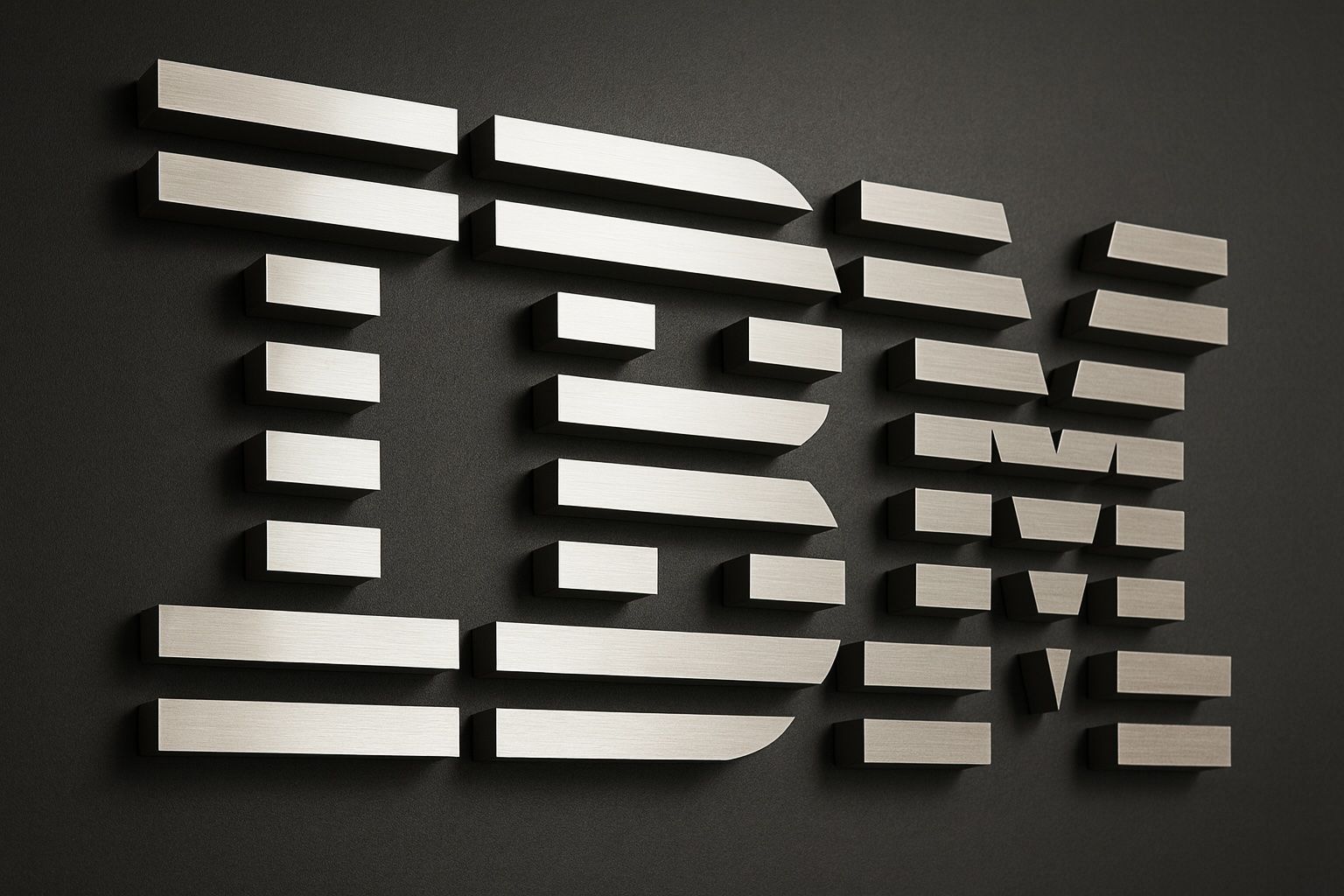- Quantum Breakthrough: IBM announced Oct 24 that it can run a key quantum error‑correction algorithm on readily available AMD FPGAs [1]. This step, IBM says, is “a big deal” for making quantum computing practical [2].
- 10× Faster Performance: IBM research chief Jay Gambetta noted the implementation on AMD hardware is ten times faster than needed [3]. The low-cost AMD chip makes real‑time error correction feasible.
- Quantum Roadmap: The work was completed a year ahead of schedule for IBM’s Starling quantum computer (due by 2029) [4]. IBM also reminds that it is racing Microsoft and Google in quantum, after Google’s recent algorithm breakthrough [5].
- Partnership: IBM and AMD began collaborating in August on “quantum‑centric” supercomputing [6] [7]. IBM’s Arvind Krishna and AMD’s Lisa Su say this hybrid approach could “push past the limits of traditional computing” and “accelerate discovery and innovation” [8].
- Stock Rally: IBM and AMD shares surged on the news. On Oct 24, IBM jumped about 8.2% to $308.32 [9] (its highest since 2022), and AMD hit a record intraday peak (~$253, up ~8% [10]). In fact, both stocks closed at all‑time highs after trading on the Reuters report [11] [12].
IBM and AMD’s Quantum Computing Push
IBM and AMD are aggressively combining their strengths in quantum and classical computing. In August 2025 they announced a “quantum‑centric supercomputing” alliance, aiming to blend IBM’s quantum chips with AMD’s CPUs, GPUs and FPGAs [13] [14]. As IBM CEO Arvind Krishna put it, “Quantum computing will simulate the natural world and represent information in an entirely new way… [working] together… we will build a powerful hybrid model that pushes past the limits of traditional computing.” [15] AMD’s CEO Lisa Su echoed this vision: by converging high‑performance and quantum computing, “we see tremendous opportunities to accelerate discovery and innovation.” [16]
The October announcement is a concrete step in that plan. IBM published research showing its quantum error‑correction algorithm – developed in June – can run in real time on an off‑the‑shelf AMD field‑programmable gate array (FPGA) [17]. This matters because qubits (quantum bits) are extremely error‑prone. Real‑time error correction is critical for fault‑tolerant quantum machines. As IBM’s Gambetta explained, the fact that the algorithm works on a “readily available AMD chip that is not ‘ridiculously expensive’” is a breakthrough [18]. AMD’s role is crucial: its chips could provide the fast, parallel processing needed to correct qubit errors on the fly [19].
For context, IBM’s Starling quantum computer (targeted for 2029) relies on robust error correction. Gambetta noted this FPGA implementation was finished a year ahead of schedule [20]. Meanwhile, IBM’s partners – including Japan’s RIKEN institute – are already linking IBM quantum modules to classical supercomputers (e.g. Fugaku) [21]. All of these efforts underscore that IBM’s quantum roadmap is accelerating.
Industry Competition and Significance
This news comes as Big Tech races to dominate quantum. IBM is explicitly “racing to develop quantum computing against Microsoft and Alphabet’s Google” [22]. (Earlier in October, Google revealed its own quantum algorithm advancement.) The fact that IBM’s solution can run on common AMD hardware may give IBM a practical edge, by lowering cost and leveraging existing chip infrastructure. Investopedia notes that “for IBM, this breakthrough is progress toward making quantum computers more commercially viable,” while “for AMD, it shows how affordable, flexible chips are becoming essential in advanced research” [23].
In short, analysts see this as validating the quantum computing approach. IBM’s innovation suggests quantum systems are getting closer to real-world use, while AMD’s involvement broadens its reach beyond traditional GPUs into next‑gen computing. As Investopedia sums up, the event “took a quantum leap” in both companies’ prospects [24].
Market Impact: Stocks Surge and Outlook
The market reaction was immediate. IBM’s stock jumped about 8.2% on Oct 24, closing at $308.32 [25] – its largest single‑day gain in months. AMD’s stock similarly surged ~8%, to a new record near $253 [26]. Both companies closed at all‑time highs that day [27]. Notably, AMD’s shares have more than doubled year‑to‑date, and IBM is up roughly 40% in 2025 [28] – making IBM the second‑best performing Dow stock of the year.
Why such enthusiasm? Investors see this quantum success as confirmation of each company’s long‑term strategy. AMD is already a star performer in AI and data center hardware (it powers top supercomputers like Frontier and El Capitan). Its recent deals (e.g. with OpenAI) and now involvement in IBM’s quantum project suggest multi‑front growth [29] [30]. IBM, meanwhile, has struggled in recent years but is betting on hybrid cloud, AI (Red Hat acquisition) and now quantum. This demonstration of technology leadership – plus IBM’s upcoming earnings – has analysts cautiously upbeat.
Investors will be watching upcoming guidance: for instance, TipRanks notes one top analyst expects AMD to deliver an upside (“beat‑and‑raise”) quarter [31]. For IBM, gains in Quantum and AI could reshape forecasts by next year. In any case, experts agree that these quantum computing advances “could tackle real‑world problems at unprecedented speed and scale” [32] [33] – and that potential is now reflected in rising valuations for both IBM and AMD.
Sources: Reuters (technology and markets) [34] [35]; company announcements (AMD newsroom, IBM community) [36] [37]; Investopedia analysis [38] [39]; Google Finance stock data [40].
References
1. www.reuters.com, 2. www.reuters.com, 3. www.reuters.com, 4. www.reuters.com, 5. www.reuters.com, 6. www.amd.com, 7. community.ibm.com, 8. www.amd.com, 9. www.reuters.com, 10. www.google.com, 11. www.investopedia.com, 12. www.investopedia.com, 13. www.amd.com, 14. www.amd.com, 15. www.amd.com, 16. www.amd.com, 17. www.reuters.com, 18. www.reuters.com, 19. www.amd.com, 20. www.reuters.com, 21. www.amd.com, 22. www.reuters.com, 23. www.investopedia.com, 24. www.investopedia.com, 25. www.reuters.com, 26. www.google.com, 27. www.investopedia.com, 28. www.investopedia.com, 29. www.google.com, 30. www.investopedia.com, 31. www.google.com, 32. www.amd.com, 33. www.investopedia.com, 34. www.reuters.com, 35. www.reuters.com, 36. www.amd.com, 37. community.ibm.com, 38. www.investopedia.com, 39. www.investopedia.com, 40. www.google.com







